Exclusive: How jockey Jonjo O’Neill, trainer Peter Easterby and racehorse Sea Pigeon beat the odds and medics to win the Ebor at York 40 years ago
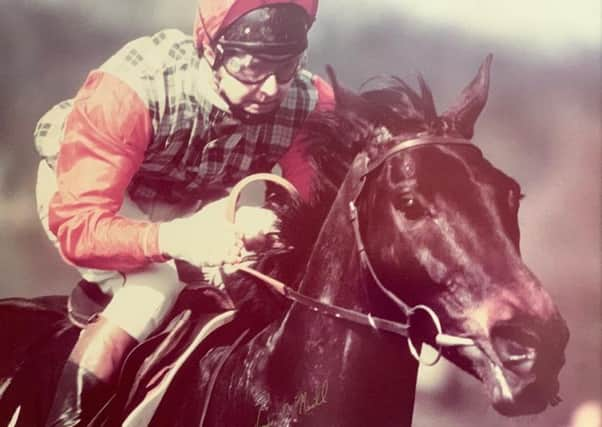

FORTY years after the legendary Sea Pigeon won the Ebor – York’s historic handicap – on a tide of emotion, Peter Easterby still has palpitations when he recalls the epic race.
Advertisement
Hide AdAdvertisement
Hide Ad“My heart stopped for a bit that day,” recalls the down-to-earth Yorkshireman who had turned his Ryedale farm into one of the country’s most successful training establishments.
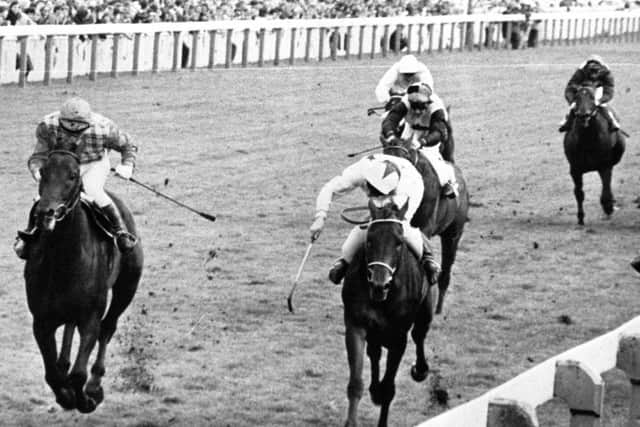

The evergreen Easterby – who has just celebrated his 90th birthday – is referring to the now infamous finish where Sea Pigeon was nearly caught on the line after jockey Jonjo O’Neill, nursing a secret injury, dropped his hands in the closing stages.
Advertisement
Hide AdAdvertisement
Hide AdWhen the result of the photo-finish was confirmed after an agonising wait which became more tense with each passing second, and then minute, delirium broke out on the Knavesmire.
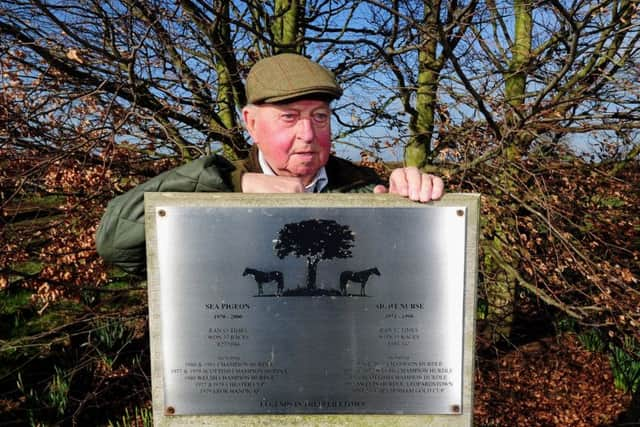

“The judge took some time to announce the result,” observed the legendary Corinthian rider and writer John Oaksey in the Daily Telegraph. “When he did so, two words, ‘No 1”, produced perhaps the loudest cheer of Sea Pigeon’s fabulous career.”
Advertisement
Hide AdAdvertisement
Hide AdA Yorkshire racing fairytale, The Yorkshire Post’s racing correspondent Victor Green – The Duke – hailed the victory on this midweek Wednesday as “a performance of epic proportions”.
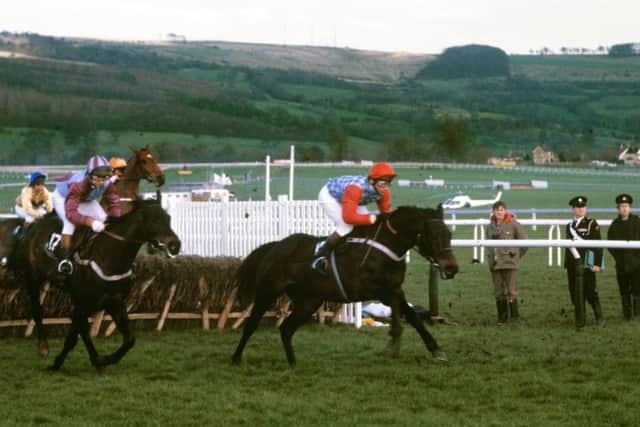

Not only had Sea Pigeon – who subsequently went on to win two Champion Hurdles at the Cheltenham Festival in the twilight of his career – won the Ebor meeting’s signature race for the ever popular Easterby, but he had carried top weight of 10 stone, the most since Gladness prevailed under 9st 7lb in 1958.
And while Frankie Dettori’s mount Enable will tomorrow bid to join modern-day York greats like Frankel and Sea The Stars when she contests the Darley Yorkshire Oaks, even racing’s number one showman will struggle to match the ecstasy that was witnessed 40 years ago.
Not only was this a horse who was difficult to tame when he first joined Easterby – but the aforementioned O’Neill, the iron man of jump racing who redefined the meaning of the word ‘courage’ in a injury-hit career, had to ‘con’ the racecourse doctors to be passed fit to ride in the Ebor, a race first staged in 1843.
Advertisement
Hide AdAdvertisement
Hide Ad“One of the most special moments in my racing life – wonderful stuff,” remarked University of York graduate Alastair Down, later a distinguished writer and broadcaster, who was among those to rush to the winner’s enclosure because he sensed a special reception for a horse already “revered” by racing for his unique exploits over hurdles and weight-carrying performances in the Flat’s top handicaps.
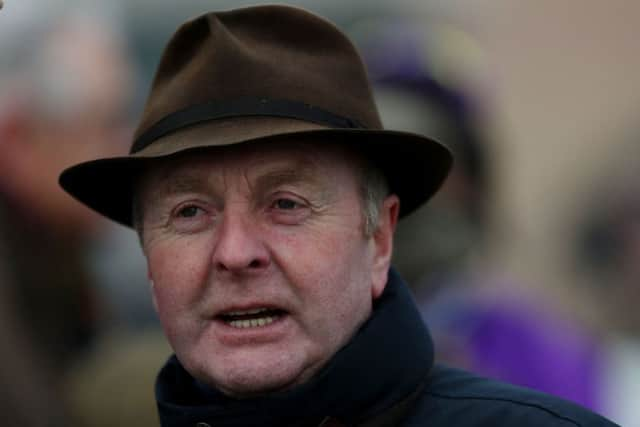

And Claude Duval, The Sun’s longstanding racing correspondent, added: “The reception was as good as anything at the Cheltenham Festival – you would have heard the cheers in Tadcaster. What makes Sea Pigeon unique is that they said he was ‘horse with no brakes’. I’d never heard that before.”
Born in 1970 at a Kentucky stud farm, Sea Pigeon was initially considered to be an Epsom Derby contender by his then trainer Jeremy Tree and finished seventh to the Edward Hide-ridden Morston in the 1973 blue riband race – his immaturity did him few favours and he was subsequently gelded.
Sea Pigeon was sold to Scottish businessman Pat Muldoon for £10,000 – “including VAT so the Government has a bit of him too” according to the colourful owner – and switched to the Cumbria yard of Gordon Richards where he began a promising career over obstacles during hurdling’s golden era.
Advertisement
Hide AdAdvertisement
Hide AdHowever a falling out between owner and trainer saw Sea Pigeon join Easterby’s Great Habton stables where he was to begin a great rivalry with stablemate Night Nurse, the 1976 and 1977 Champion Hurdle hero.
“He had ability but the biggest job was getting him to settle,” Easterby told The Yorkshire Post. “He always wanted to gallop from the off. If you do that, you’re not going to win. We brainwashed him. He used to go on the same gallop every day – often behind the same horse – and he got the message.”
Renowned for his late burst of acceleration, Sea Pigeon was beaten by Monksfield in the 1979 Champion Hurdle after appearing to hit the front too soon and idling under O’Neill. Even now, Easterby blames himself for telling his jockey “not to wait too long”.


Yet, with the versatile Yorkshire contender allocated top weight for York because of his performances over hurdles and in top Flat handicaps, O’Neill – the champion National Hunt jockey – was able to take the ride.
Advertisement
Hide AdAdvertisement
Hide AdThe problem is that he smashed four toes in his left foot when they struck a wooden rail while he was riding in a charity race at Dundalk the previous week – and he feared the worst as he hobbled back to the weighing room on one leg. It is at this moment that he began an elaborate deception which adds to the race’s legend
“I just said to the doctor ‘It’s pretty sore, but I will go and get an x-ray and it will be fine’,” O’Neill told this newspaper in an exclusive interview to mark the anniversary. “He said ‘which foot?’I just said it would be fine. I didn’t want too many questions. If he had put down in my medical book that it was my left leg, I would have had no chance of passing the doctor at York.”
Yet, because of this, O’Neill was the first rider to arrive on Ebor day – he wanted a low-profile – and showed the course doctor his right foot when he sought medical clearance. “I quickly assured him that my toes were fine and he gave me the all clear,” recalled the jockey who had won the Cheltenham Gold Cup earlier in the year on Easterby’s Alverton. “I felt like jumping for joy, but couldn’t. I knew the horse had a great chance.”
His travails were still not over. There was the small matter of the long walk from the weighing room to the paddock after O’Neill’s medical mentor Hugh Barber produced a steel plate to insert from heel to toe in the left riding boot.
Advertisement
Hide AdAdvertisement
Hide AdThe idea, said O’Neill, who remains one of the most popular figures in racing after subsequently defying cancer to go on and become a Cheltenham Gold Cup and Grand National-winning trainer, was to take the pressure off his stricken foot when he pressed down in his riding irons.
The problem was that it accentuated his limp as he walked – and made him appear taller. Already towering over many of the Flat jockeys, he tried to hide between his fellow riders as they walked out into York’s paddock for a one and three-quarter mile race like no other. Legged up onto Sea Pigeon, in Muldoon’s tartan silks, O’Neill thought he was in the clear.
He was not. Like the aforementioned Easterby, the jockey says he has lost count of the number of occasions when racegoers have told him how they watched the race – and unfolding drama – on television.
They were mistaken. ITV, who held the broadcasting rights, were on strike and there is no footage of the race. Only recently did the nonagenarian Easterby source a photo of the finish from this newspaper.
Advertisement
Hide AdAdvertisement
Hide AdFor much of the race, Sea Pigeon – then nine-years-old – travelled with ease against his younger rivals. O’Neill recalls the gelding settled “sweetly” before picking off his rivals “one by one” up the home straight. He also sensed other jockeys were struggling. “Pigeon kept pressing forward, on, on, on, and suddenly the winning post was in our sights,” he said. “We passed the leader Donegal Prince a furlong out and half a furlong later we had it in the bag.
“The roar from the crowd exploded in our ears, but then my confidence ran away with me and, foolishly, I dropped my hands on Sea Pigeon’s neck, thinking he could coast home and still win. I should have known better. He was too wise by half, downed tools and stropped as if I had shot him. Young Philip Robinson rallied Donegal Prince. We passed the post locked together but I was certain Sea Pigeon had last home.”
Had he as a photo-finish was called? O’Neill’s confidence was shattered when Graham Lockerbie, who looked after Sea Pigeon, said Donegal Prince had appeared to deny the local hero.
Even now, he can recall the wait, fidgeting nervously with the reins, squirming in the saddle and feeling sick in the pit of his stomach, as he – and the whole of Yorkshire – waited. And waited.
Advertisement
Hide AdAdvertisement
Hide AdConfident of an upset, Robinson took Donegal Prince into the position reserved for the winner – his trainer Paddy Prendergast was always accompanied by an Irish priest for their annual pilgrimage to York – while O’Neill tried to placate an increasingly doubtful Easterby.
With the negative of the photo-finish unclear, a print had to be developed before official confirmation – adding to the drama. “I thought we were in trouble here, you know,” ventured Easterby whose son, Tim, is due to saddle the proven performer Wells Farhh Go in this Saturday’s Sky Bet Ebor which will be worth £1m for the first time ever.
“The announcement came, finally, and he only got ‘Sea’ out and you couldn’t hear ‘Pigeon’ because of the roar. A popular winner, locally trained, 10 stone, it was some performance. And odds of 18-1. I was fairly confident, oh yes. If we were worried about top weight, we wouldn’t have run him.”
Yet, while County Cork-born O’Neill put it down to the famed ‘luck of the Irish’ and found himself walking on cloud nine, he was called into the stewards’ room to explain his ride. “I thought I’d won by a neck. It turns out it was by a whisker,” he said.
Advertisement
Hide AdAdvertisement
Hide AdJohn Sanderson, the then clerk of the course, says the winning rider was “ashen-faced” as he watched the racecourse’s footage – and how he nearly threw away one of the biggest wins of his life.
Evidently O’Neill blamed fatigue before the racecourse’s doctor asked to see the injured foot. “It must be hurting you,” he told the now weary rider.
Even now, O’Neill, 67, chuckles at his good fortune as he describes Sea Pigeon as one of the best horses that he ever rode. “The Irish entry in my medical book did not state which foot had been crushed! Only then did I tell the doctor and I was out of action for some time,” he said. “I’d also not told anyone about the injury. If we’d been beaten, I don’t think we would have got out of there alive and Peter would have been the first to pull the trigger.”
Not so, says Easterby, who confirms that he didn’t know about the broken toes “until after” the race. “It didn’t matter a damn,” added the five-time Champion Hurdle-winning trainer whose Sonnen Gold won the Gimcrack Stakes on the same day. “Would have if he had lost. But he didn’t.”
A champion horse like no other
Advertisement
Hide AdAdvertisement
Hide AdSEA PIGEON is regarded as one of Britain’s greatest ever racehorses due to his versatility, longevity and daring hold-up tactics that jockeys had to deploy.
The winner of 37 out of 85 races, his successes on the Flat included the Chester Cup in 1977 and 1978 followed by York’s Ebor in 1979.
Over jumps, his finest hours came at Cheltenham where he won the Champion Hurdle in 1980 – “It’s the old man Sea Pigeon, he’s won it at last,” said Sir Peter O’Sullevan in commentary – before defending his title 12 months later.
He died in 2000 and his remains were buried in a paddock at trainer Peter Easterby’s stables alongside those of stablemate Night Nurse under the inscription: “Legends in their lifetime.”